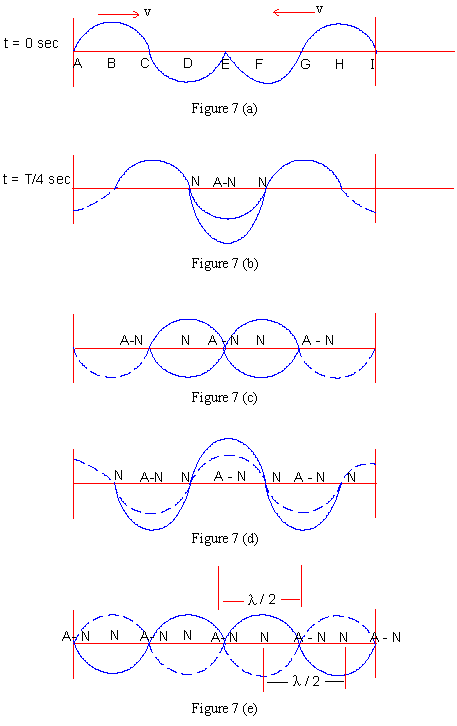|
The formation of standing waves and nodes, anti-nodes is illustrated in the following diagram.
The diagrams (a) to (e) represent the waves at successive instants as they propagate in their respective directions. The dotted curves represent the generations of further pulses, as the particles at A & I are allowed to vibrate further over a of time period T. As the waves start superposing over each other at
It should be noted that the particles where A-N are formed virate with maximum amplitude therefore for waves of frequency ≥ 10 Hz i.e. |
10.1 Intensity and Pitch Follow @Pinkmonkey_com  |

